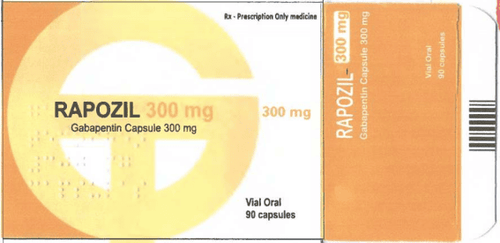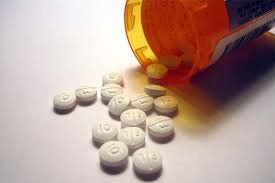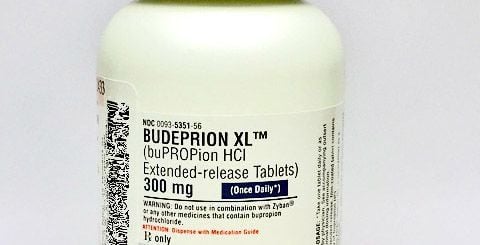This is an automatically translated article.
Drug-induced dyskinesia with mild to severe severity will have acute, subacute or late onset, sometimes life-threatening. The most common drugs that cause tremors are antiemetics and antipsychotics.
1. Acute movement disorders
Some drugs and illegal drugs have the potential to cause adverse neurological reactions, namely movement disorders ranging from mild (tremor) to severe, even life-threatening. network. Based on the time of onset, drug-induced dyskinesia is classified into three categories: acute, subacute, and late. Acute dyskinesia that occurs within minutes to days of drug administration includes the following forms:
1.1. Restlessness This is a type of movement disorder that is quite common, but often overlooked, with manifestations such as:
Feeling restless; Jittery; Stress. Reactions occur after initiating, increasing dose, or switching to dopamine receptor blockers, selective serotonin reuptake inhibitors, antiepileptic drugs, and cocaine. Symptoms are often worse at night, but do not necessarily manifest as physical signs. Restless leg syndrome is different and more serious than restless leg syndrome. This condition may improve after the patient stops taking the suspected drug. A number of pharmaceuticals have also been indicated to manage this adverse reaction, but the effectiveness is still not guaranteed.

Người bệnh có biểu hiện căng thẳng
1.2. Tremor After taking or increasing the dose, the movement disorder caused by the drug in the form of:
Postural tremor; Motor tremors; Secondary tremor (rare). The physician should rule out other causes of tremor (Parkinson's disease, essential tremor, hyperthyroidism), and then manage by adjusting the dose, switching to an alternative drug, or stopping the suspected drug. If you must continue to take medications that cause tremors, your doctor will advise you carefully about the benefits and risks associated with them.
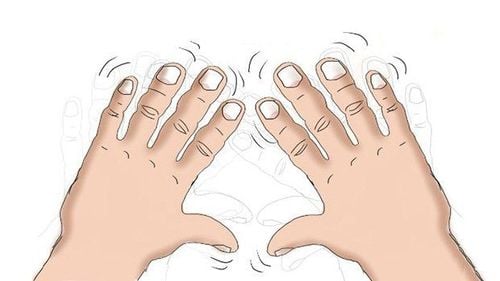
Run vận động tay
1.3. Serotonin syndrome Secondary serotonin syndrome occurs with the use of drugs that increase serotonin activity. This drug-induced movement disorder can range in severity from mild to severe, with clinical manifestations such as:
Changes in mental status; There are signs of central nervous system overstimulation: Myoclonic tremor, tremor, restlessness, increased abnormal reflexes, spastic paralysis,... Autonomic disorders: Dilated pupils, fever, tachycardia. The onset of serotonin syndrome is usually very rapid (within a few hours) and the symptoms are more prominent.
1.4. Acute dystonia Mainly occurs in young people after taking dopamine receptor blockers (antiemetics and psychotic), is life-threatening and requires immediate medical attention. Characteristic of this drug-induced movement disorder are:
Acute head and neck spasticity; Occurrence of claudication; Body spasticity causes the posture to bend; Dystonic limb muscles; Obstruction of the airways (acute laryngeal dystonia).

Tắc nghẽn đường hô hấp gây cảm giác khó thở cho người bệnh
1.5. Neuroleptic Malignant Syndrome This is a life-threatening reaction caused by antipsychotics and dopamine receptor antagonists (administered or discontinued within the previous 72 hours). Manifestations include:
Fever at least 2 episodes above 38°C; Stiffness; Change in mental status; Increased creatine kinase, white blood cells, electrolyte disturbances; Autonomic disturbances, increased metabolism, heart rate and tachypnea; Tests revealed kidney failure , abnormal liver function and blood clotting disorders . This drug-induced dyskinesia may also be milder and may not present any of the above clinical symptoms.
2. Subacute disorder
Subacute disorders that may appear days to weeks after administration, include some of the syndromes listed in item 1 and the following types:
2.1. Parkinson's syndrome Unlike idiopathic Parkinson's disease, drug-induced Parkinson's syndrome is characterized by:
Slow movement; Postural disorders; Stiffness and loss of movement are symmetrical; Onset several days to several months after taking the drug; Poor response to typical Parkinson's medications; Symptoms are fully reversible upon discontinuation of the suspected drug, but some of the toxins responsible for Parkinson's syndrome cause irreversible destruction of basal ganglia.
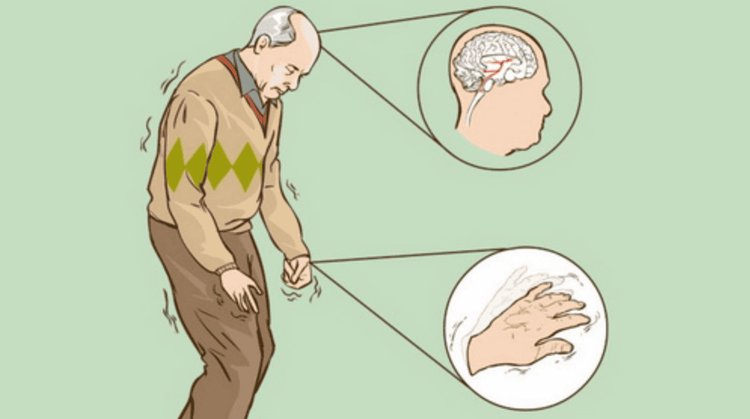
Hội chứng Parkinson với biểu hiện vận động chậm
2.2. Levodopa-induced dyskinesia Levodopa is a common cause of dyskinesia in people with Parkinson's disease, usually due to a correlation between decreased number of dopamine receptors and the body's response to levodopa. Risk factors for this drug-induced movement disorder include:
Early onset of Parkinson's disease; Taking high doses of levodopa; Low weight; Serious illness. Depending on the duration of the movement disorder and the extent of its effects, the doctor will adjust the dose of levodopa while ensuring the treatment effect. May or may not reduce dose, use other drugs to control or use assistive devices (later phase).
3. Tardive dyskinesia
Drug-induced tardive dyskinesia will last about 1 month, occurring during or several weeks after taking the drug (used for 1-3 months). In children, it may occur when the drug is stopped suddenly after taking antipsychotics for a long time. The drugs that cause late tremor are usually antipsychotics, antiemetics, calcium channel blockers with dopamine receptor blocking properties. Tardive dyskinesia includes:
Dyskinesia, typically in the mouth - tongue; Disturbance, repetitive movements without purpose; Lying restlessly; Muscular dystonia; Muscle tremors; Run; Mechanical machines; Late Parkinson's syndrome.
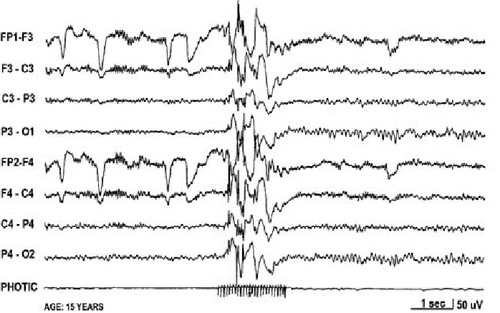
Rung giật cơ được ghi lại bằng máy
4. Drugs that cause tremors in hands and feet
There are cases where the drug is the direct cause of the hand and foot tremors, or just triggers a pre-existing syndrome. Movement disorders can be associated with many medications, including:
4.1. Antiarrhythmic drug Amiodarone: Causes tremor in about one-third of patients, but the mechanism is unknown. Tremor often depends on posture and increases with concentration, frequency of tremor is about 6 - 10 Hz and gradually decreases after drug discontinuation; Procainamide: Also reported to be associated with tremor; Mexiletin: Causes tremors, dizziness and memory loss in about 10% of people taking the drug; Procainamide : Relatively rare.

Thành phần Amiodarone trong thuốc chống loạn nhịp tim
4.2. Antibacterial drugs Co-trimoxazole antibiotics: Causes tremors at both rest and exercise, usually subsides after drug discontinuation and the mechanism is not well understood; Some antiviral drugs (vidarabine, aciclovir): It has been reported to cause tremor in some patients, usually appearing after 5-7 days of treatment and gradually decreasing when the drug is stopped; Antifungals: Mainly amphotericin B and ketoconazole can cause tremor, the rest are very rare. 4.3. Antidepressants Tremor is also a common side effect of:
Tricyclic antidepressants: Amitriptyline; Selective serotonin inhibitors: Fluoxetine, paroxetine (also a group of antidepressants) with the rate of 20%; Lithium: The most common cause of drug-induced dyskinesia in clinical practice, but most cases are mild and do not affect too much (tremor frequency about 8-12 Hz).

Thuốc chống trầm cảm có thể gây ra tác dụng phụ cho người bệnh
4.4. Antiepileptic drugs Although used in the treatment of tremor, most of these drugs also belong to the group of drugs that cause tremors. Specifically:
Valproic acid: Causes tremors in both head and body for about 80% of patients with 25% having obvious clinical manifestations; Some other antiepileptic drugs: Tiagabine, gabapentin, lamotrigine and oxcarbazepine. 4.5. Bronchodilators Fast acting beta sympathomimetic drugs: Salbutamol, isoprenaline, terbutaline have been reported to cause tremor in about 7 - 20% after infusion and oral administration; Long-acting beta-2-agonists: Salmeterol is less likely to cause tremors than the upper group; Theophylline and aminophylline: Also initiates potential tremor when administered by infusion.
4.6. Metoclopramide Gastrointestinal: Causes tremor at rest, is dose dependent and usually occurs in patients with renal impairment; Cimetidine, misoprostol and bismuth salt: Causes tremor in a small number of patients if overdosed.

Một số loại thuốc tiêu hóa có thể gây rối loạn vận động
4.7. Hormonal Run is a common manifestation of overdose:
Levothyroxine; Adrenaline (adrenal marrow hormone); Medroxyprogesterone acetate. 4.8. Sedatives Dopamine-antagonist sedatives: Thioridazine, fluphenazine and chlorpromazine cause tremors in 15 - 60% of users both at exercise or at rest; Atypical sedatives: Risperidone, olanzapine, quetiapine and ziprasidone usually cause tremor only at high doses. 4.9. Anti-cancer and cytotoxic chemicals Drugs that cause tremors of the hands and feet are usually mild to moderate, increasing with exercise:
Thalidomide; high dose cytarabine; Some other chemicals: Ifosfamide, vincristine, cisplatin, tamoxifen also cause tremor in a few cases; Immunosuppressive drugs: Ciclosporin and tacrolimus used in the prevention of organ rejection and autoimmune diseases
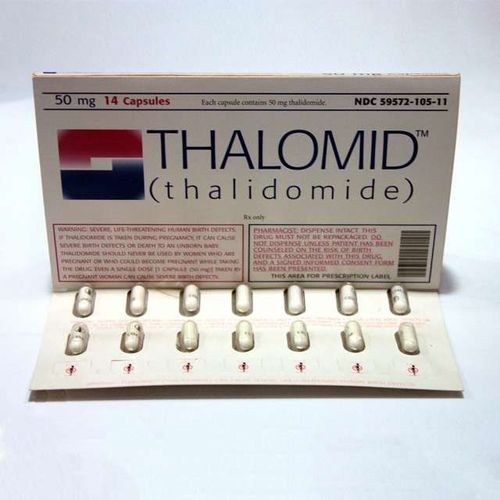
Thalidomide
4.10. Some other drugs Other drugs that cause tremors are also reported sporadically:
Calcium channel blockers (cinnarizine, flunarizine); Antihypertensives (methyldopa, reserpine, pindolol); sympathomimetic drugs (ephedrine, pseudoephedrine and phenylpropanolamine); Illegal substances such as cocaine. Drug-induced dyskinesia is a common, sometimes life-threatening, adverse reaction. Early recognition of what a movement disorder is and determining what drug is actually causing this reaction is important. The most common drugs that cause tremors are antipsychotics and antiemetics. The majority of measures to manage drug-induced dyskinesia are discontinuation of the suspected drug, supportive care, and the use of medication in some cases.
Please dial HOTLINE for more information or register for an appointment HERE. Download MyVinmec app to make appointments faster and to manage your bookings easily.







